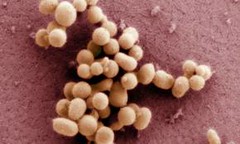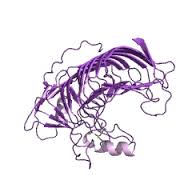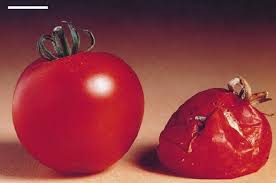A Fishy Problem
For years, the genome of the friendly neighborhood Felis catus has been overlooked. After the human, mouse, and rat genomes were completed in the early 2000s, the NIH passed over cats in lieu of sequencing the dog genome. The question is, why? More influential people cared about dogs than cats. Furthermore, dogs suffer from many similar hereditary diseases as humans, such as arthritis. Kennel clubs also aided in the recruitment of many canine volunteers. Therefore, the canine genome was quickly sequenced. In fact, it was completed in 2005, two whole years before even an incomplete feline genome would be sequenced (1).

Cinnamon the Abyssinian cat was the first cat to ever have her genome sequenced. Image from the Cat Genome Sequencing Initiative.
The first cat to ever have her genome sequenced was an Abyssinian named Cinnamon. Light (2-fold) sequencing was completed in 2007. While inexpensive, this type of genome sequencing left many gaps. Approximately 60% of her DNA was sequenced (6). It wasn’t until 2014 that the first full feline genome was completed. Cinnamon’s genome was estimated to contain 19,493 genes that are thought to code for proteins and 1,855 noncoding RNAs (5).
Pawing for Feline Importance
Cats can serve as a valid models for many human diseases. Feline asthma, retinal atrophy, and type 2 diabetes are quite similar to their human counterparts. Cats suffer from several infectious diseases that are homologues to human diseases too, such as Feline Immunodeficincy Virus (FIV), the feline equivalent of HIV. Other diseases that cats suffer from that are also similar to human diseases are feline leukemia virus (corresponds to leukemia in humans), feline coronavirus (corresponds to avian influenza and SARS in humans), feline sarcoma virus (corresponds to sarcoma in humans). Therefore, cats are effective models of these diseases. (1, 6)
Cats also suffer from many hereditary diseases similar to those found in humans. For example, autosomal dominant polycystic kidney disease (PKD) is caused by mutations in the exact same gene in humans and cats (1, 3). PKD is the most prevalent hereditary disease in cats, since it affects approximately 6% of all cats in the world. It is found most predominantly in Persian cats, of which about 38% have inherited it. Afflicted cats suffer from cysts found in their livers, kidneys, and pancreases. The mutation that causes it is found in the PKD1 gene on the E3 chromosome. In this gene, Lyons et al. found a single transversion, in which a cysteine was replaced with an adenine. This single nucleotide change reads as a stop codon instead of another amino acid. Thus, translation of the protein the PKD1 gene codes for is stopped approximately 25% too early in cats with this mutation. It is thought that this single nucleotide polymorphism causes feline PKD. However, while this mutation has not been found in humans with PKD, similar areas of the resultant protein are missing. Consequently, cats are a viable natural model of this human disease. (3).
The Purrfect Solution
Fortunately, the Feline Genetics Lab at the University of Missouri is currently seeking to rectify this grievous imbalance. They have initiated a project called the 99 Lives Cat Genome Sequencing Initiative. Their goal is to sequence the genomes of 99 cats, both wild and domestic. Ultimately, this project will improve health care for cats and identify genetic variations within this adorable species. As of May 2015, they are over halfway there. Thus far, they have sequenced 53 individuals of varying breeds. (1, 4)

Lil Bub is a polydactyl cat, with more toes on each paw than normal cats. Image by Flikr user Kyle Matteson.
The next addition to this lineup is none other than the Internet sensation Lil Bub. She has several hereditary diseases. She has one extra toe on each paw, thus making her polydactyl cat. The scientists in charge of sequencing the Lilbubome have already discovered she is very distantly related to Ernest Hemingway’s famous polydactyl cats. She also may suffer from osteopetrosis, dwarfism, and mucopolysaccharidosis (either type I or IV), which are congenital bone disorders. Osteopetrosis is a very rare disorder that causes her bones to harden and grow denser. Mucopolysaccharidosis and/or dwarfism could be the cause(s) of her short stature. This project aims to identify the mutations that could result in her phenotype. (2)
References
- Callaway, E. (2015). “I can haz genomes, too.” Nature, 517, 252-253. Retrieved May 11, 2015, from http://www.nature.com/news/i-can-haz-genomes-cats-claw-their-way-into-genetics-1.16708
- Ibrahim, D., & Garcia-Lupiañez, D. (2015). The LilBubome – Sequencing LilBub’s Magical Genome. Retrieved May 11, 2015, from https://experiment.com/projects/the-lilbubome-sequencing-lilbub-s-magical-genome
- Lyons, L. A., Biller, D. S., Erdman, C. A., Lipinski, M. J., Young, A. E., Roe, B. A., & … Grahn, R. A. (2004). Feline polycystic kidney disease mutation identified in PKD1. Journal Of The American Society Of Nephrology: JASN, 15(10), 2548-2555. Retrieved May 11, 2015 http://jasn.asnjournals.org/content/15/10/2548.full
- Lyons, L. (n.d.). 99 Lives Cat Genome Sequencing Initiative. Retrieved May 11, 2015, from http://felinegenetics.missouri.edu/99lives
- Montague, M. J., Li, G., Gandolfi, B., Khan, R., Aken, B. L., Searle, S. J., & … Warren, W. C. (2014). Comparative analysis of the domestic cat genome reveals genetic signatures underlying feline biology and domestication. Proceedings Of The National Academy Of Sciences Of The United States Of America, 111(48), 17230-17235. doi:10.1073/pnas.1410083111 Retrieved May 11, 2015 from http://www.researchgate.net/profile/Razib_Khan/publication/269094600_Comparative_analysis_of_the_domestic_cat_genome_reveals_genetic_signatures_underlying_feline_biology_and_domestication/links/54816dd80cf263ee1adfb8ce.pdf
- Pontius, J. U., Mullikin, J. C., Smith, D. R., Lindblad-Toh, K., Gnerre, S., Clamp, M., & … O’Brien, S. J. (2007). Initial sequence and comparative analysis of the cat genome. Genome Research, 17(11), 1675-1689. Retrieved May 11, 2015 from http://genome.cshlp.org/content/17/11/1675.long


















